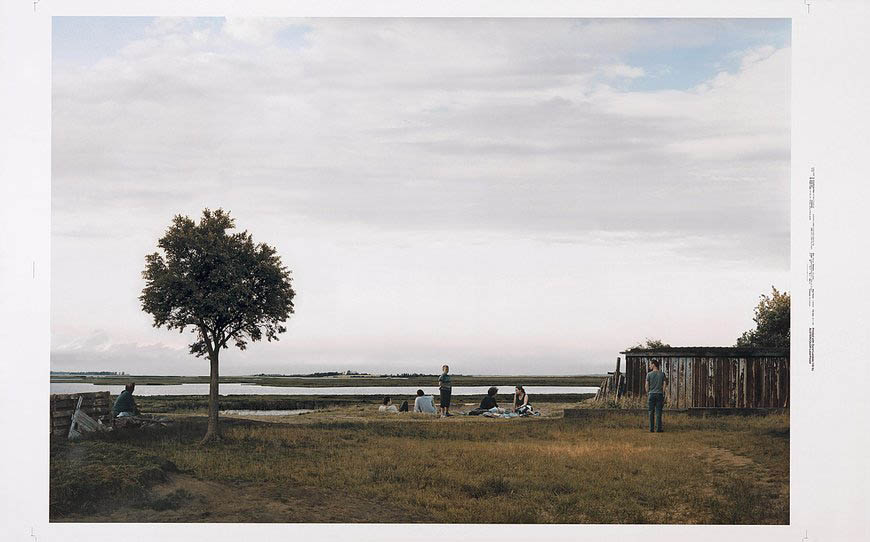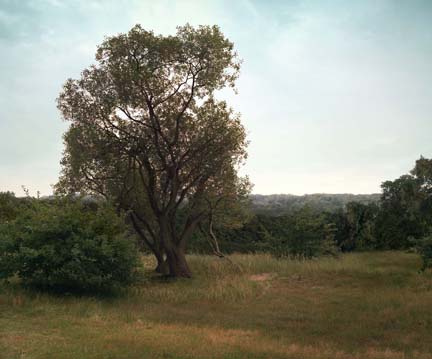About the Photographer
Gütschow, Beate
German, b.1970
Beate Gütschow's exploration as an artist probes questions of pictorial representations of reality. Initially a painter and installation artist, Gütschow became attracted to photography for its apparent, though qualified, ability to faithfully and accurately represent the world around us. Drawing from an enormous collection of photographs of trees, buildings, clouds, hills, and people—mostly taken with analog film by the artist herself— Gütschow's pictures are landscapes assembled digitally from up to hundred different photographic elements. Her final constructions at first glance appear as if captured from reality but upon closer inspection they are revealed as fiction. The museum's collection includes works from two of Gütschow's photographic projects, titled LS and S, which similarly deal with constructed realities while questioning ideals of nature and the city, respectively.
The large-scale color photographs in the LS series follow the formal rules of romantic landscape painting of the 17th century and are influenced by artists such as Claude Lorrain, John Constable, and Nicolas Poussin. Traditional landscape paintings are organized with three distinct spaces: the foreground serves as the viewer's entrance into the picture, usually framed by trees like a stages set; the middle ground contains a river or path and people looking outward; and the background vanishes in the far distance. The frame suggests an expansive terrain. Using these rules, Gütschow creates an idyllic landscape by seamlessly mixing fragments of photographs of parks, construction sites, pristine nature, and people engaged in leisure activities. The deliberate inclusion of familiar 21st century elements like garbage, trees cut by chainsaws, and people in T-shirts endows an otherwise romantic landscape with implausibility and suspicion.
While Gütschow's LS series recalls 17th century landscape painting, the S series makes reference to more recent media—black-and-white architectural and documentary photography of the 1950s and '60s. Photographing in Berlin, Chicago, Kyoto, Los Angeles, New York, and Sarajevo, Gütschow appropriates buildings, parking lots, stairways, and people. Reconfiguring these elements of architecture from different areas of the world, she synthesizes a disorienting cosmopolitan space with a confused temporality. Just as she positions picnic-goers in her landscapes, Gütschow recontextualizes the images of homeless people and tourists—fixtures of the modern city. The imagery in the S series is post-apocalyptic, revealing failed social ideals through alienating architecture. Despite the utopian ideals behind the modern architecture, cities are less hospitable than we idealize them to be.
Gütschow studied at the Hochscule für Bildende Künste, Hamburg, Germany, and at the Kunstakademiet, Oslo, Norway. She lives and works in Berlin.




